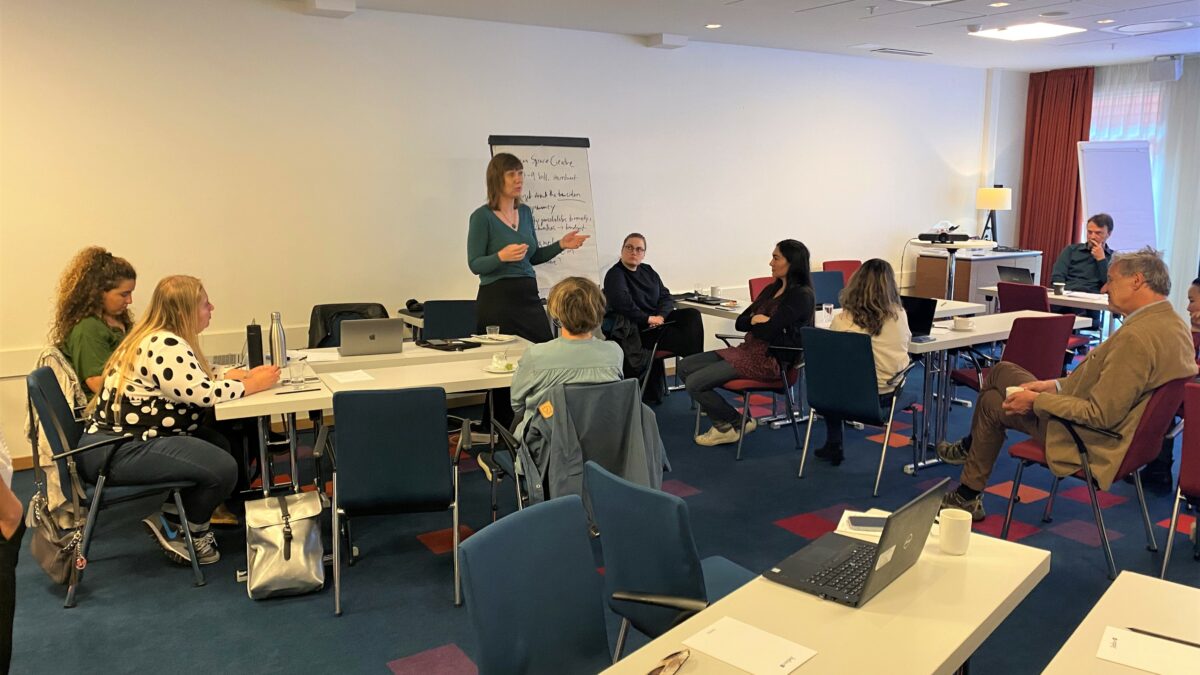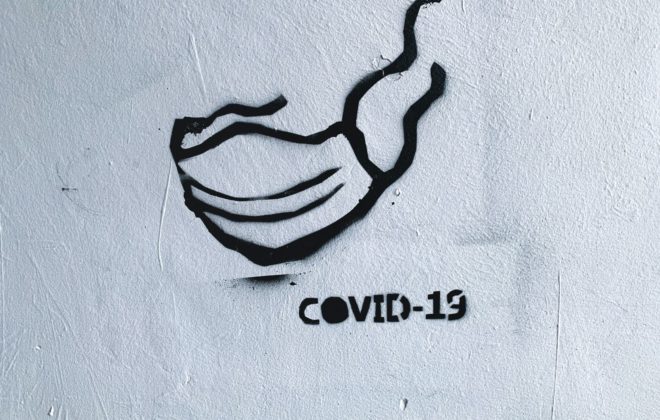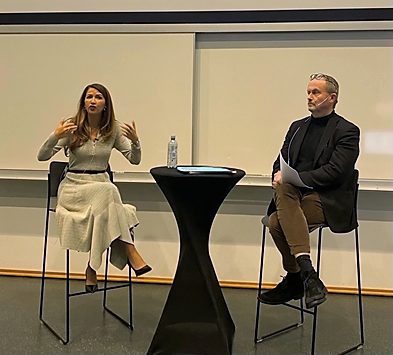A tale of two meetings
AFINO organized a meeting in May to celebrate its mid-life point. This meeting soon came to be affectionately called among us the “mid-life crisis meeting”. I guess that evoking crisis was our attempt to dispel or exorcise it, and to keep a pinch of healthy irony
Because of some contingencies related to the Covid-19 pandemics, another, larger event that we had planned for January, was moved to May and it seemed convenient to hold the two events one after the other in the same location, downtown Bergen.
This lumping together of the two events turned out to be quite interesting because it allowed us to have two different experiences. First, we participated into a discussion about AFINO’s achievements, shortcomings and future direction. Immediately after we were involved in some collaborative work and learning together with a good sample of the AFINO network. It was, as it were, like thinking about what AFINO should be and then feeling what AFINO is. The reality, with its spontaneous and unplanned features, offers a very interesting foil for our own rational speculations.
I will give you a short description of the events, and then offer you my own very personal reflections.
How did we celebrate AFINO’s half-life?
If you find facts boring, you can skip this section and jump to my controversial interpretations! If instead you think that a few facts are a good starting point, bear with me for a moment. The AFINO mid-life meeting was a small event limited to the leaders of the AFINO working groups and affiliated projects plus an invited guest: professor Tsjalling Swierstra from Maastricht University. Professor Swierstra is an expert in the ethics and the politics of new and emerging science and technology and a member of AFINO international advisory board.
The two questions that we sent to Working groups leaders and projects leaders:
Think of these two and a half years of work for AFINO. What is the thing you are more happy or proud of? What has AFINO enabled you to do that you would have not done without the network?
Think of the things that did not work so well or that you are concerned about for the continuation of your work for AFINO. Now, tell us what is the most important challenge that AFINO needs to address in the coming years, and how do you propose to tackle it?
Read the answers from some of the WP-leaders and project leaders to this questions further down.
The meeting was also short. We convened for only three hours, but we did quite a lot. Our main aim was to take stock of what we have achieved so far and what has worked well and made us proud. Yes, we thought that patting ourselves on the shoulder after two and half years of work, most of whom under the restrictions imposed by the pandemic was not too much of a self-indulgence. However, we have enough irony and commitment to being critical and reflective to think that we should also discuss what did not work, what needs to be improved and what we need to achieve by the end of the project. So, the idea was to give ourselves a good serving of carrot and stick.
The meeting had a simple structure. The centre’s director, professor Siri Granum Carson, kick started the meeting highlighting some significant events and achievements and flagging some upcoming challenges. This was also the theme of the following two presentations, which were based on two questions (see box) about AFINO’s successes and achievements and about the most serious challenges that the network needs to address. My own presentation attempted to synthesize the views of the leaders of the AFINO working groups. Professor Arnt Fløysand did the same with the views of the AFINO affiliated projects. Time for discussion was too short and I hope that we can continue the discussion here, by commenting and sending replies and responses to this piece.
Some thought-provoking advice
We then opened to external inputs from our guest speaker. Professor Swierstra did not venture into an appraisal of the AFINO network, but expressed its appreciation for the diversity of the network and for the energy and enthusiasm that shine through the contributions to this blog. The rest of his talk was inspired by his experience with RRI projects, which has led him to become wary of the emphasis on public engagement and deliberation: an ideal that is very difficult to achieve within the constraints of real life.
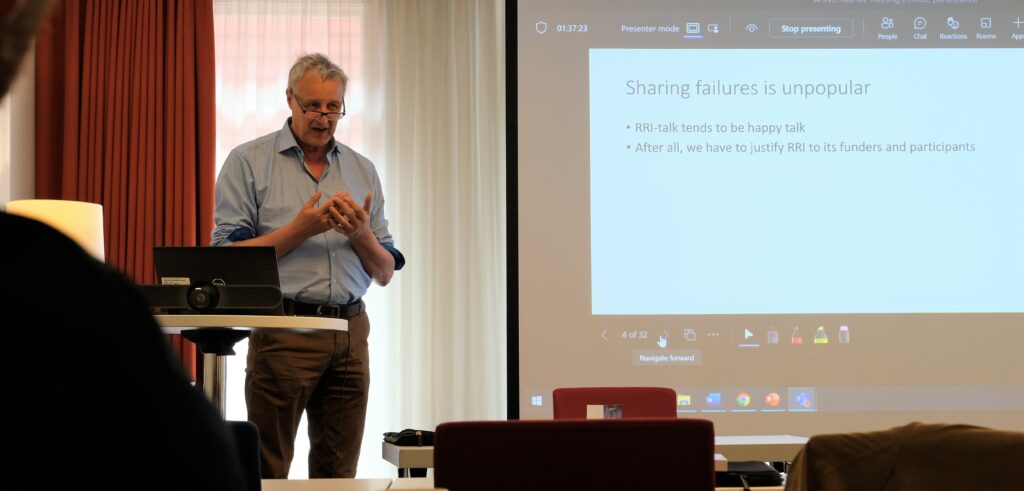
Professor Swierstra traced the origins and the philosophical and political origins of this ideal of public involvement and deliberation. He called attention both on the gap between theory and feasibility, and to the importance of the political and ideological context and climate, which affect very significantly both the popularity and success of these ideals. He also reminded us that democratic values and ideals can be pursued through many other democratic practices, like, for instance, contesting, voting, joining and exiting.
He thus invited AFINO to be aware of the challenges of public deliberation, of thinking about when it is the appropriate and realistic mechanism to enhance responsibility, and to be aware of alternative routes. He further invited the network to continue to pay attention to the challenges of interdisciplinarity and to the cultural differences between different sectors and stakeholders, which sometimes put deliberation and consensus out of reach. A point that he illustrated with some personal experiences of failure to realise the deliberative ideal of public involvement.
And indeed, the final and key advice to the AFINO network was to “provide a platform to share and learn from each other’s problems and failures”. There is a lot of “happy talk” in RRI, but only facing failures and reflecting on how to make it work in unfriendly environments can make RRI really robust.
And a bit of creative fun
We finished the meeting with a game that I designed. The purpose was to stimulate different, free and creative ways of thinking about AFINO’s priorities in view of the future. So, we were divided in three groups, each of which was given a different scenario within which to formulate a proposal for a second AFINO project to be presented to a funder. And this proposal should be synthesized into a two minutes pitch that was assessed by our examining board. The scenarios imagined funding agencies imposing stricter demands for funding, like the ability to raise as much funding from private investors or local government, becoming financially self-sustaining or having more involvement from sectors outside academia. The proposals of our three groups were quite different, ranging from very pragmatic solutions to disdainful rejections of funding coming with such constraints. The game also provided a different setting for reflecting around some of the worries generated by the recent turmoil at the Research Council of Norway.
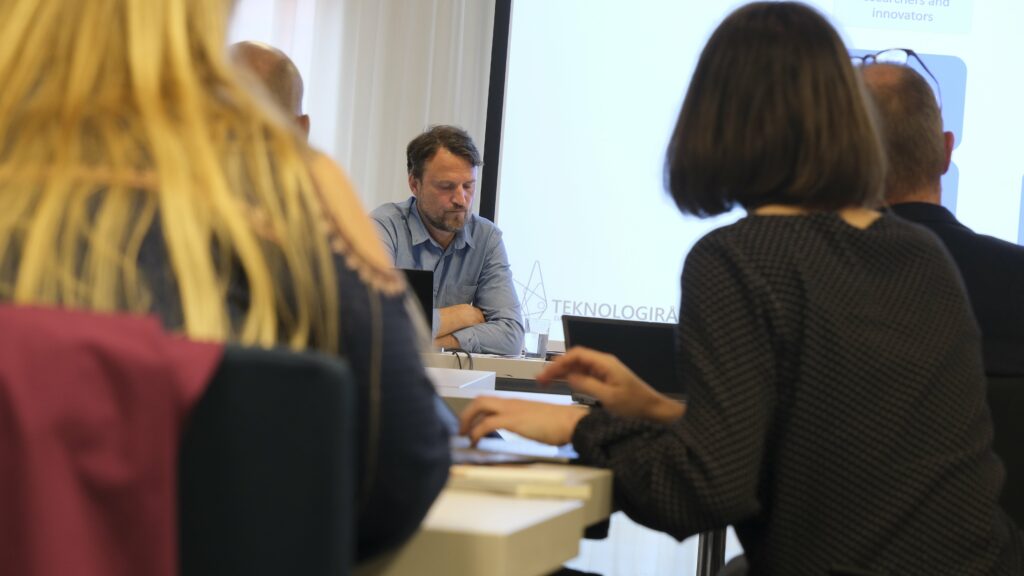
The ironies of destiny
This workshop on Public Involvement was co-organised with the Danish Board of Technology, a leading organization in the area of public involvement. The perfect irony is that in January we put off this event because one of our DBT colleagues suspected of having been infected with Covid-19. Well, it turned out that the virus only caught him a couple of days before the rescheduled date in May! Kudos to his colleague Bjørn Bedsted, who managed to single-handedly run the workshop with admirable skills and poise.
The AFINO-DBT workshop
The event had an educational purpose and was meant to introduce the participants to the origins, rationale, goals, typology and methods of public involvement. It would be hard and probably too simplistic to offer here a summary of ground covered. I only mention a couple of few points that generated quite a lot of discussion.
The fundamental aspiration of public engagement is to strengthen the bond between science and society. Against the perception that scientists and researchers are expert removed from the needs and local knowledge of citizens, public engagement aims at opening up to more voices the decisions about the ends and means of research and innovation. These broader voices need to have an impact on the design of research and innovation. The audience questions showed that this is what turns out to be difficult to realise in the real world, where researchers and research organisations are often not in the position to reopen the definition of their research goals and methods, or at least they assume great risks in doing so.
The distinction between stakeholder engagement and citizen engagement also generated many questions and discussion. While citizen engagement reflects a more radical, ambitious and democratic view of public engagement, this seems to be something that achieve its full meaning when it is done very early (upstream as the jargon has it), while in the performance of a funded project it is much more common to engage stakeholders later (downstream) and it is often challenging to engage all the relevant voices, so that the opening up is in practice often incomplete and partial.
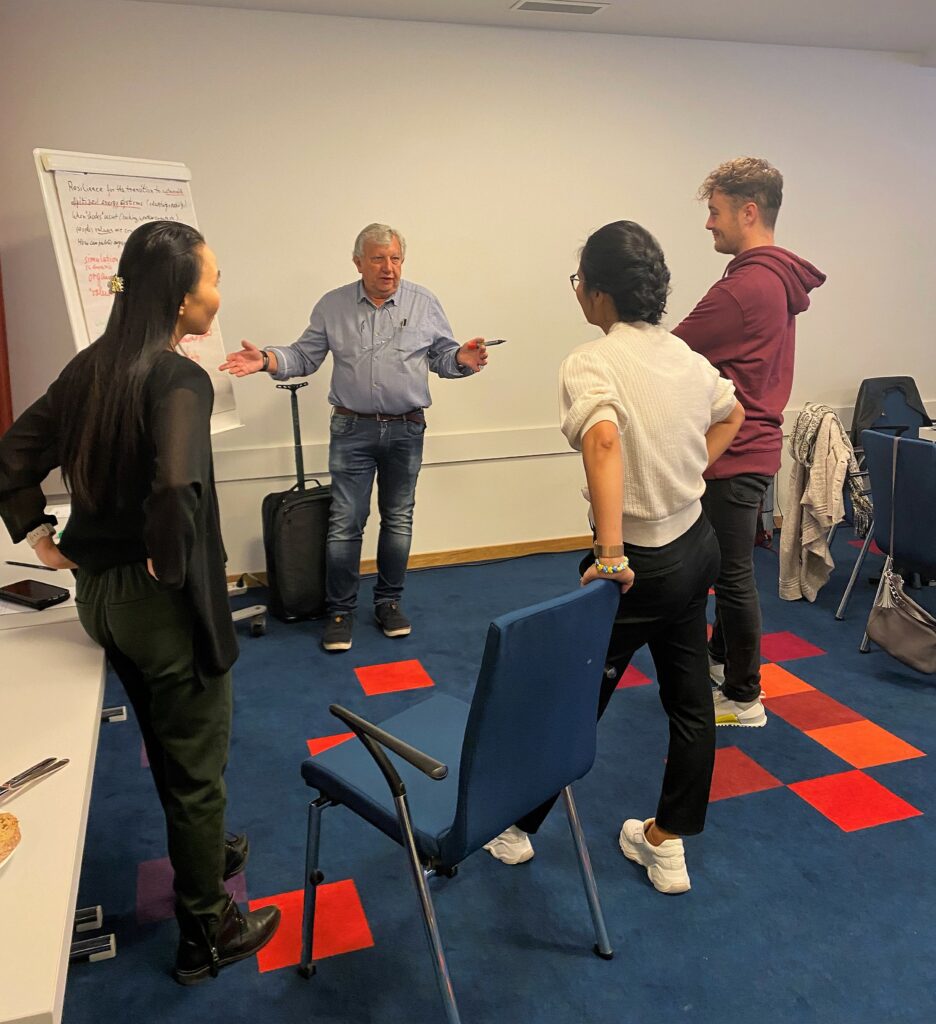
A good part of the workshop was organized as an open floor, where researchers had the chance of sharing the questions and challenges about public engagement that bother them in their current work. These questions were then put up for discussion with members of the audience and then again in a plenary discussion. This exercise elicited a lot of interest and many questions were proposed and discussed. There was great diversity of settings and issues, but the unifying feature was the concreteness of the questions, which were all coming from challenges emerged in the current experience of the participants, who seemed very pleased to have the chance to receive inputs, comments and suggestions by a pool of sympathetic peers.
So, what is my tale of these two meetings?
To me, there were a couple of points that emerged very clearly both from our self-reflective exercise in the Mid-life event, and from working together in the Public Engagement workshop. These points are that AFINO is succeeding in building a community of researchers that is very diverse and yet shares several concerns and can benefit from sharing experiences. This diversity makes the community inclusive and very much practice oriented: the common concerns are grounded in our practical challenges, not in some thematic, theoretical or methodological homogeneity. The community that is growing around AFINO does not have a theory or method to push and defend. I am convinced that this makes this community very different from the academic cliques to which I have always been allergic. I am also convinced that this helps a lot in creating a safe environment, where people do not feel judged and can safely voice their worries and talk about failures and challenges.
Surely, we are also deliberately trying to create this atmosphere, but the diversity in topics, methods and disciplines and the focus on practical challenges creates the right environment.
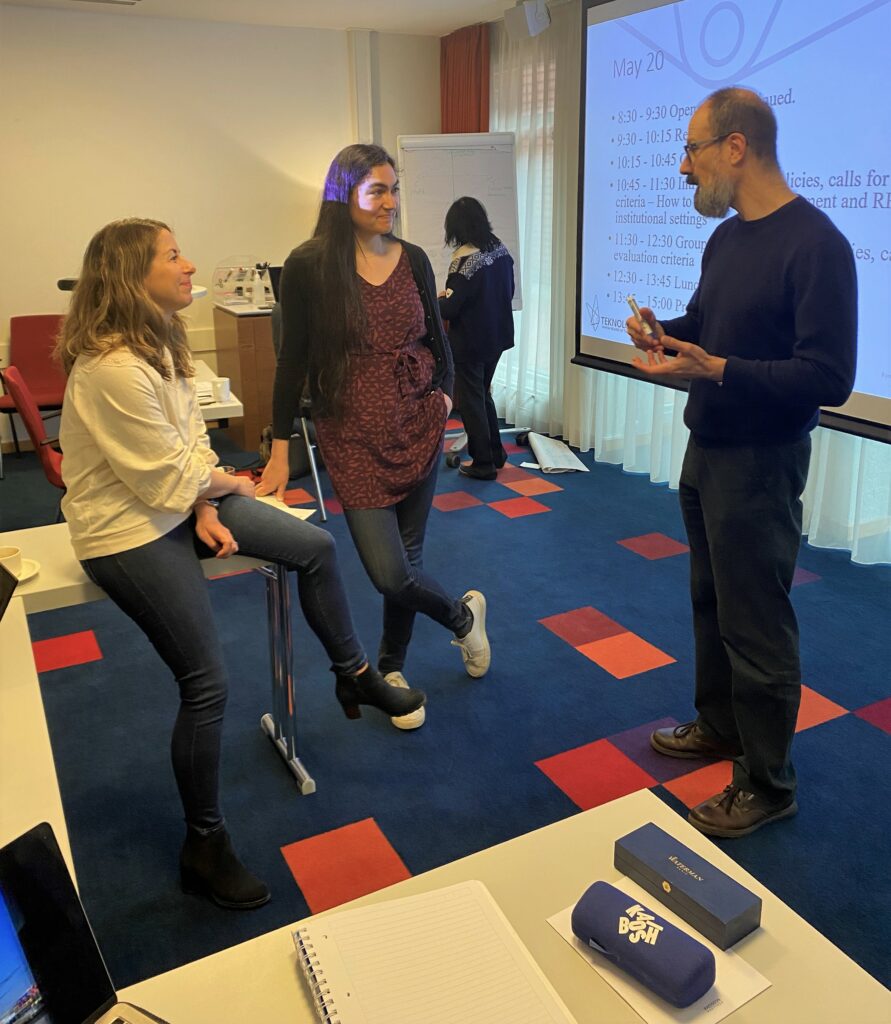
This very diversity, on the other hand, is making it difficult for AFINO to develop an easily recognized identity and to have more tangible collective outputs. Many within the network would like AFINO to be more effective in having an impact, a clear voice and to reach out beyond the academic boundaries. Diversity is not making this easy, but it should not be an excuse. We need to take up this challenge and increase the tangible products and results of our network.
What future for AFINO?
I believe that AFINO should be proud of its “soft” side and of its non-measurable results. Reinforcing the link between research and innovation and the great social and environmental challenges of our times requires many changes and many trials and errors. This is not something that can be achieved without taking care of the social, cultural, personal and psychological implications that institutional changes and unsuccessful attempts bring with them. A sense of community, a safe space for voicing worries and calling for help or sharing frustrations, an awareness that in spite of disciplinary, methodological and theoretical differences we share problems and we can get help and insights, all these are very important “soft” resources for supporting the transformation of research and innovation that we need. Yet they achievement that are not so easy to measure and translate into hard performance indicators.
I also believe that AFINO should improve its “hard” side, i.e. its ability to join forces for defining some priorities and well-defined tasks, for identifying some efficient working methods to execute the tasks and for increasing its impact and visibility. On this score we need to improve and to try new initiatives. And indeed, we have already some ideas under development.
So, stay tuned with AFINO!
Some views from our network witnessing the success of “soft” AFINO:
“I believe that AFINO has been able to create a space for discussing ethics within research and innovation in a broader way that was done before within Norwegian academia”.
“I feel happy for being part of a group where I can talk about what I feel is right, or responsible, without having to be defensive, and among people who are both engaged and well informed”.
And an example of a view prompting to strengthen “hard” AFINO:
“To play a bit of devil’s advocate, but sometimes I feel we are not ambitious enough in terms of ‘group products’. To wit, it is nice to have meetings and exchanges there, but what is the tangible, agenda-setting outcome of these? (…) What I essentially mean, I think the next evolution of our group would be to produce together tangible position papers on pertinent RRI issues. And maybe on that basis, push for some voice in the public”.
Featured image: AFINOs centre director Siri Granum Carson leading on at the AFINO – DBT workshop in Bergen in May. Photo: Joaquin Zenteno Hopp.

Giovanni De Grandis
Giovanni De Grandis has a PhD in Philosophy. In the last ten years he has worked in several transdisciplinary projects and initiatives in the areas of health, new technologies, innovation and public policy. He is the coordinator of the AFINO project and leads Work Package 2.

